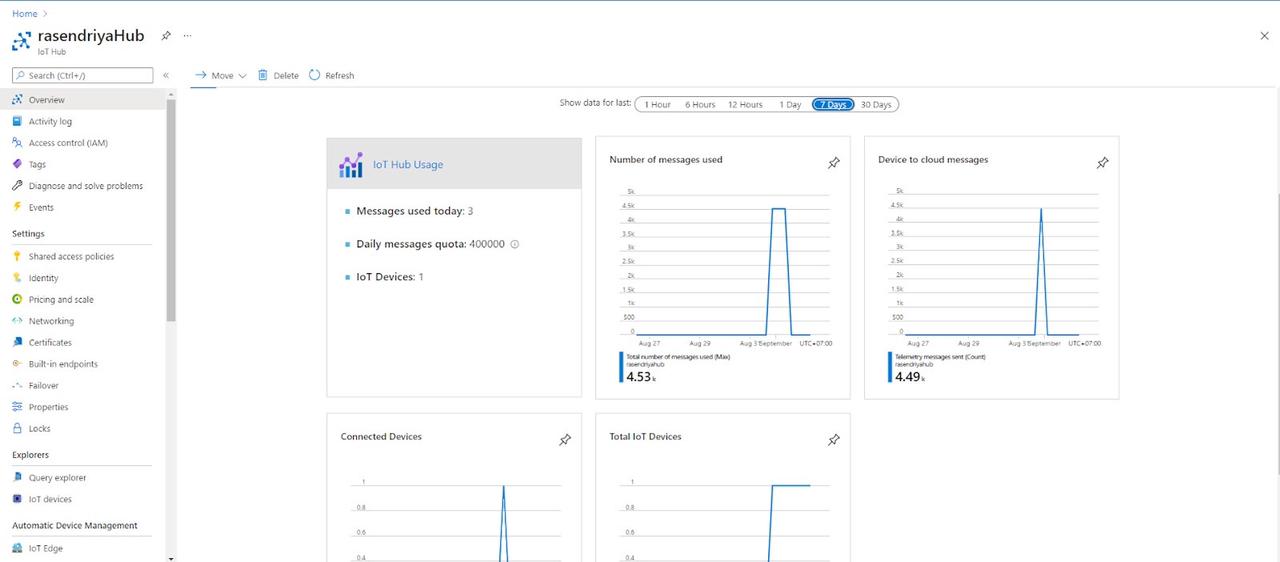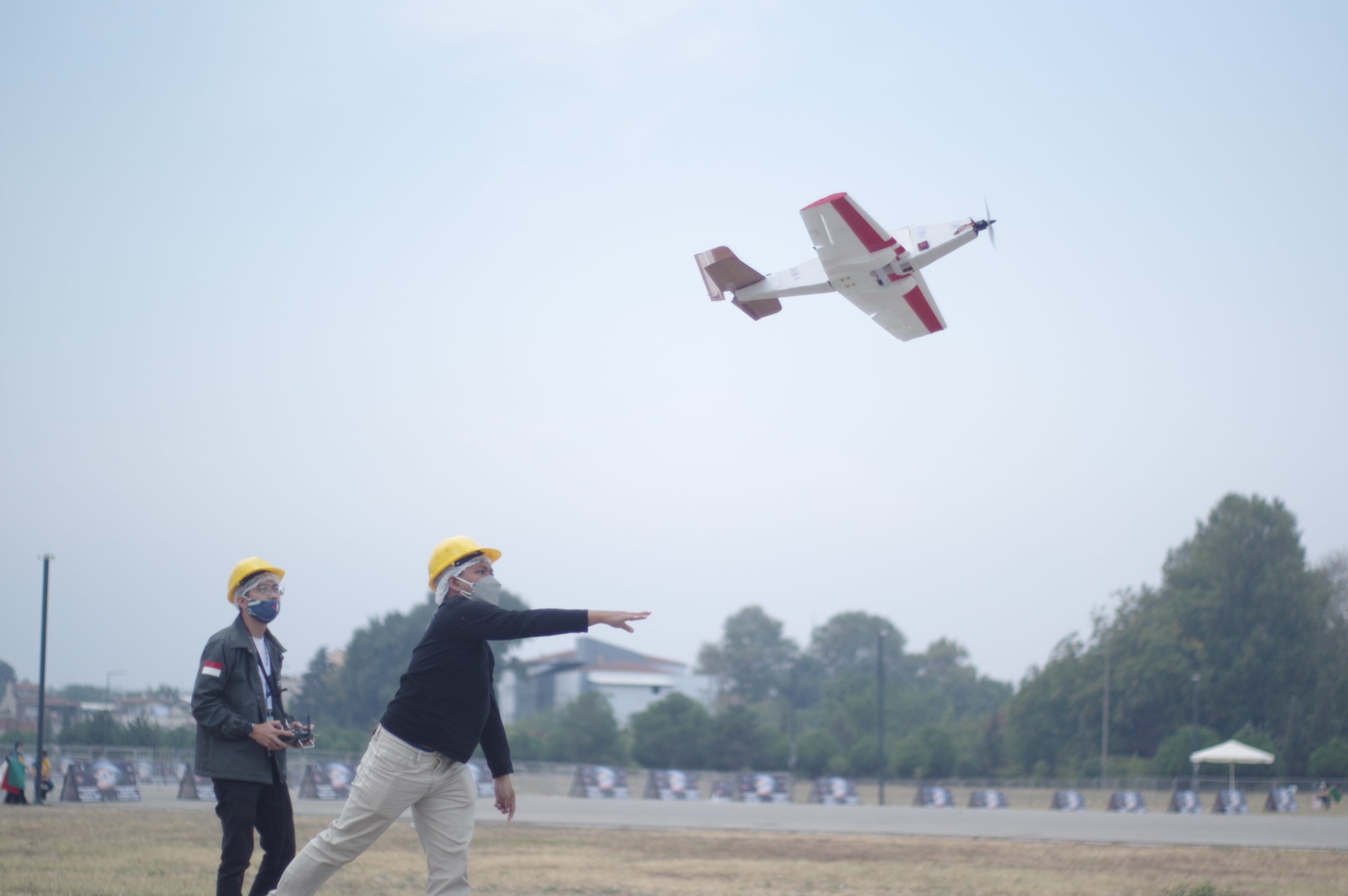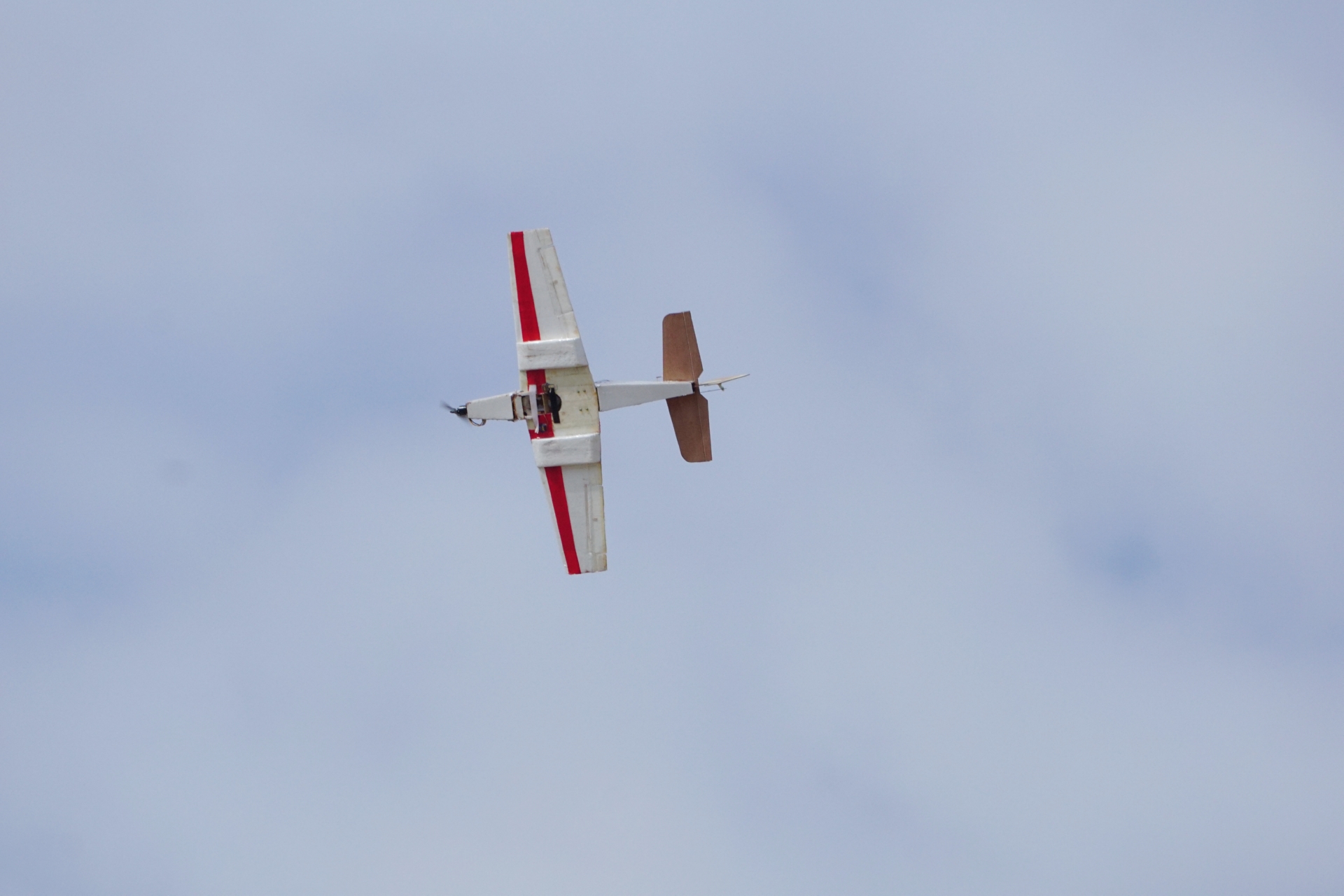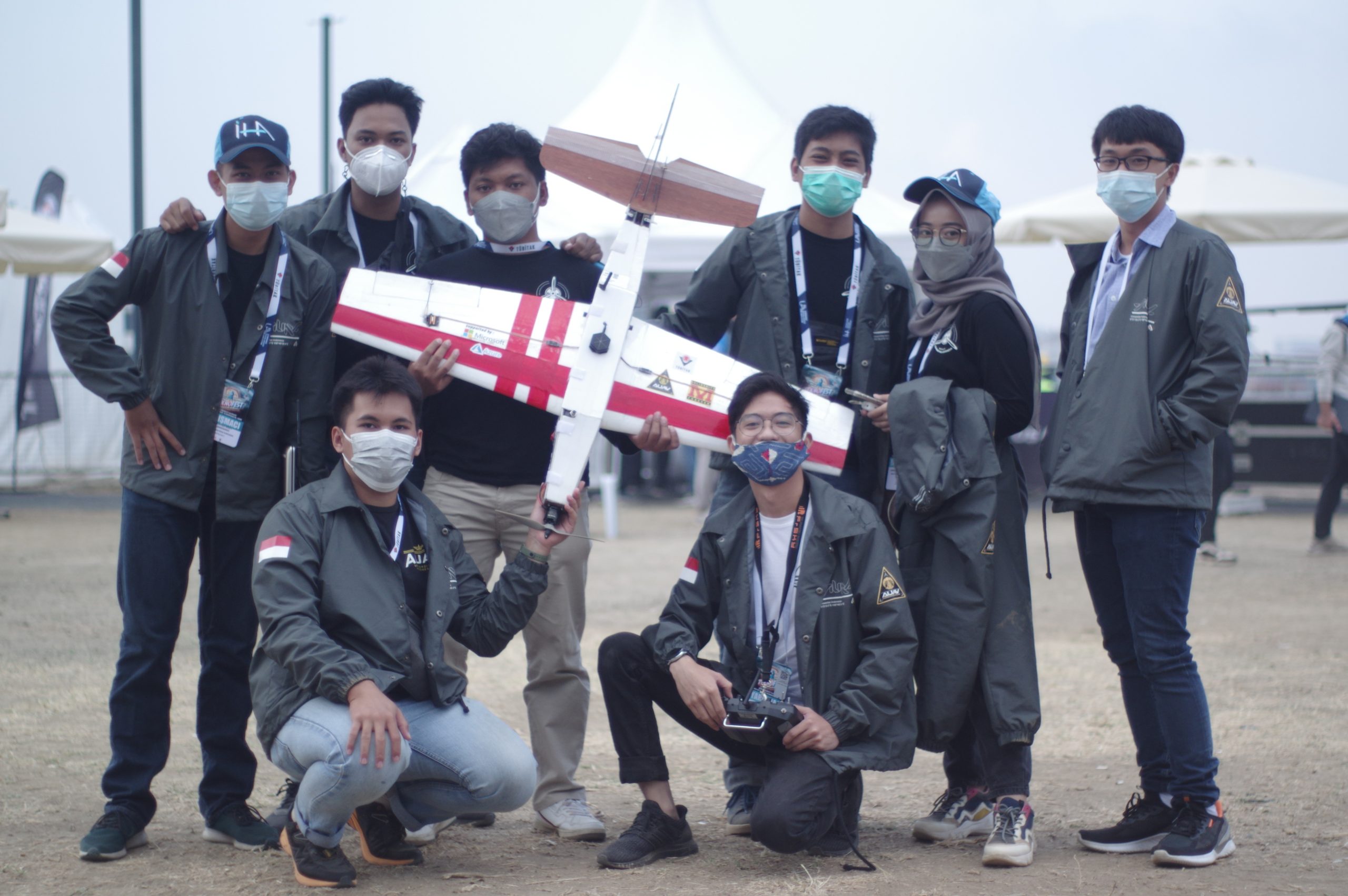Unmanned Aerial Vehicle (UAV)—an aircraft with no human on board was first developed for military purposes. However, it also offers various advantages outside of the battlefield, including but not limited to commercial, scientific, and recreational purposes. From remote public services, aerial photography and video recording, data collection, to agriculture, UAV is a safer, faster, and cheaper option compared to its manned vehicle counterpart. With the rising trend of UAV, the global UAV market is projected to grow more than 8% (Compound Annual Growth Rate) until 2026*.
And here comes a story of how nine students from the University of Indonesia (UI) started empowering Indonesia in the UAV industry, in between their online classes.
They are Luthfi Aldianta, Adam Ilham Maulana, Anindya Samiya Artanti, Daniel Martua Matthew Simatupang, Muhammad Luqman Sugiyono, Muhammad Rizky Millennianno, Pramudita Bintang Al Hakam, Raditya Aryaputra, and Shang Welly Chin – students from UI’s Faculty of Engineering and Faculty of Mathematics & Natural Sciences who spent a couple of months in their 2021 to design a UAV. Under the name Autonomous Unmanned Aerial Vehicle Universitas Indonesia (AUAV UI) team, the nine students designed a UAV with Microsoft technology to accomplish two purposes: area mapping and payload dropping, which can be used for data collection across industries.
Together, they shared the same vision of developing the Indonesian robotic industry and making the nation proud in the international arena. As such, when the Teknofest International UAV competition was held, they challenged themselves to join in the competition. Teknofest is one of the world’s largest UAV competitions in the world, as well as the first and only aviation, aerospace, and technology festival in Turkey.
“We come from different backgrounds. Some of us are studying mechanical, industrial, and electrical engineering, and the others are studying math and physics. But we share the same passion in the robotic industry, especially for aviation. With the existing robotic community that UI alumni built years ago, we feel this is the perfect place for us to develop our skills in areas we’re interested in. Moreover, the UAV industry still has huge room for improvement and tons of potential. As an aspiring engineer, this field offers wide opportunities for us to bring new technological breakthroughs that can help the Indonesian people at large,” said the team captain, Luthfi Aldianta.
In 2021, Teknofest opened more than 30 categories including smart transportation, artificial intelligence in healthcare, and UAV. The competition in the UAV category is divided into two divisions, fixed-wing and rotary-wing. Fixed-wing UAV refers to UAVs with wings that do not move, such as those in the normal aeroplane. Meanwhile, a rotary-wing UAV uses rotating blades normally seen in helicopters.
“We joined the fixed wing division, and the competition was divided into three stages. The first one was a conceptual design evaluation and the second one was when we had to submit the detailed design report and flight video. The first two stages were done in home countries, and we scored exceptional results. Thanks to that, we moved to the last stage: the competition week on 13-18 September 2021 in Bursa, Turkey,” said Luthfi.
Among more than 250 registered teams joining the competition, the AUAV UI team became one of the 50 teams that made it to the final round and went to Turkey.
The hard and smart work behind a UAV
In developing a UAV, different areas need to be considered – from the design, manufacturing, electrical, to programming. To integrate all these into one UAV, the team did countless trials and errors. It was a long journey, but they were excited whenever they managed to figure out a problem and solve it. And technology was what helped them to solve the challenges.
In preparing the plane manufacture processes, the team used Microsoft Excel. “The universal nature of Excel really helped us to easily calculate and compare various design parameters, such as materials and manufacture techniques. Therefore, we can narrow down our options and choose the most suitable materials and techniques to create a lightweight vehicle without compensating the speed,” said the Mechanical Lead, Muhammad Luqman Sugiyono.
Along with the mechanical part of the vehicle, the team also had to create software that allows the plane to fly autonomously. To support all the programming works the team had to do, they rely on Microsoft Azure, a cloud computing service by Microsoft.
The example of Microsoft Azure usage in the development of UAV
“We found out about the potentials that Azure can bring to our UAV programming about three weeks prior to our flight to Turkey, and it helps us a lot. It answers our need to do uninterrupted and real-time data reading from remote sources, real-time prediction of where the cargo will drop, and store test flights data to be analyzed remotely. Everything, even the data visualization, is done in the cloud with Azure, making our data analysis hassle-free,” said Daniel Simatupang, the Electrical & Programming Lead.
With all the collaborative works the team must do, the AUAV UI team also utilized GitHub, a web-based platform for software development and version control. In a simpler term, GitHub is a platform designed for developers to build and make edits collaboratively. It also enables developers to easily merge their changes onto their master project.
“GitHub allows us to put our code in the repository, so we don’t need to carry a USB flash drive or other external storage. It also makes it easier for us to keep track of the version changes. All the previous updates are still saved in GitHub as well, so it’s very convenient to go back to older versions of our software when we need to. This has become even more relevant when we were doing a major revamp to our programming due to some errors we experienced during the competition,” Muhammad Rizky Millennianno, the Electrical & Programming Member explained.
The competition, unpredictable results, and bigger dream
Due to the pandemic, the team had to go to Turkey without their academic advisors, as they need to limit the number of people flying.
“When we first landed, we had mixed feelings. On one hand, we were very proud to be able to reach the final stage. But on the other hand, we are very nervous because there was no academic advisor accompanying us. Although we can still text and call them, the time difference was quite long, so we can’t contact them that often. Fortunately, all team members are very supportive. We also had time to meet with the Indonesian Consulate General, another Indonesian team, and the Indonesian Student Association at Bursa. Our nervousness was reduced a bit,” said the Anindya Samiya Artanti, Managerial Lead.
In Turkey, two missions have been awaiting the team: fly the UAV based on the waypoint and drop the load to a predetermined location accurately. Each team was given 6 test flights, one for each day, to accomplish the two missions. The team once had to do a major evaluation on the program and the plane on the spot, but the hard work was paid off. They ranked 9 among more than 150 teams competing in the Fixed Wing Category. They also became the only team from outside of Turkey that made it to the top ten!
Daniel said, “We did not expect it. We are proud of the result and learn many new things that can help us in developing even a greater UAV. For example, we need to pay attention not only to the UAV itself, but also the other external factors, such as weather. Since flights highly depend on the weather, we should be able to simulate different scenarios of how the weather might affect our flight with Azure, hence the UAV can fly in different situations.”
“Participating in this competition gave us a lot of lessons and experience. In terms of mechanical capabilities, we have a lot more to improve, be it about the programming or the actual build of the plane. But asides from technical things, we also met many inspiring teams from other countries that are open to exchanging ideas with us. There were those that may be limited in resources but were able to showcase the spirit of a resilient engineer. That’s exactly the kind of engineers we aspire to be,” Anindya reflected.
Just like the old saying goes, we can’t keep doing the same thing, the same way, and expect different results. With agility, curiosity, and a sprinkle of creativity, the AUAV UI team successfully showcases the huge potential of Indonesian young talents and becomes an inspiration for others to create the next big thing, whatever their passion might be.
Fly high, AUAV UI Team!
-End-
*UNMANNED AERIAL VEHICLES MARKET – GROWTH, TRENDS, COVID-19 IMPACT, AND FORECASTS (2021 – 2026)

